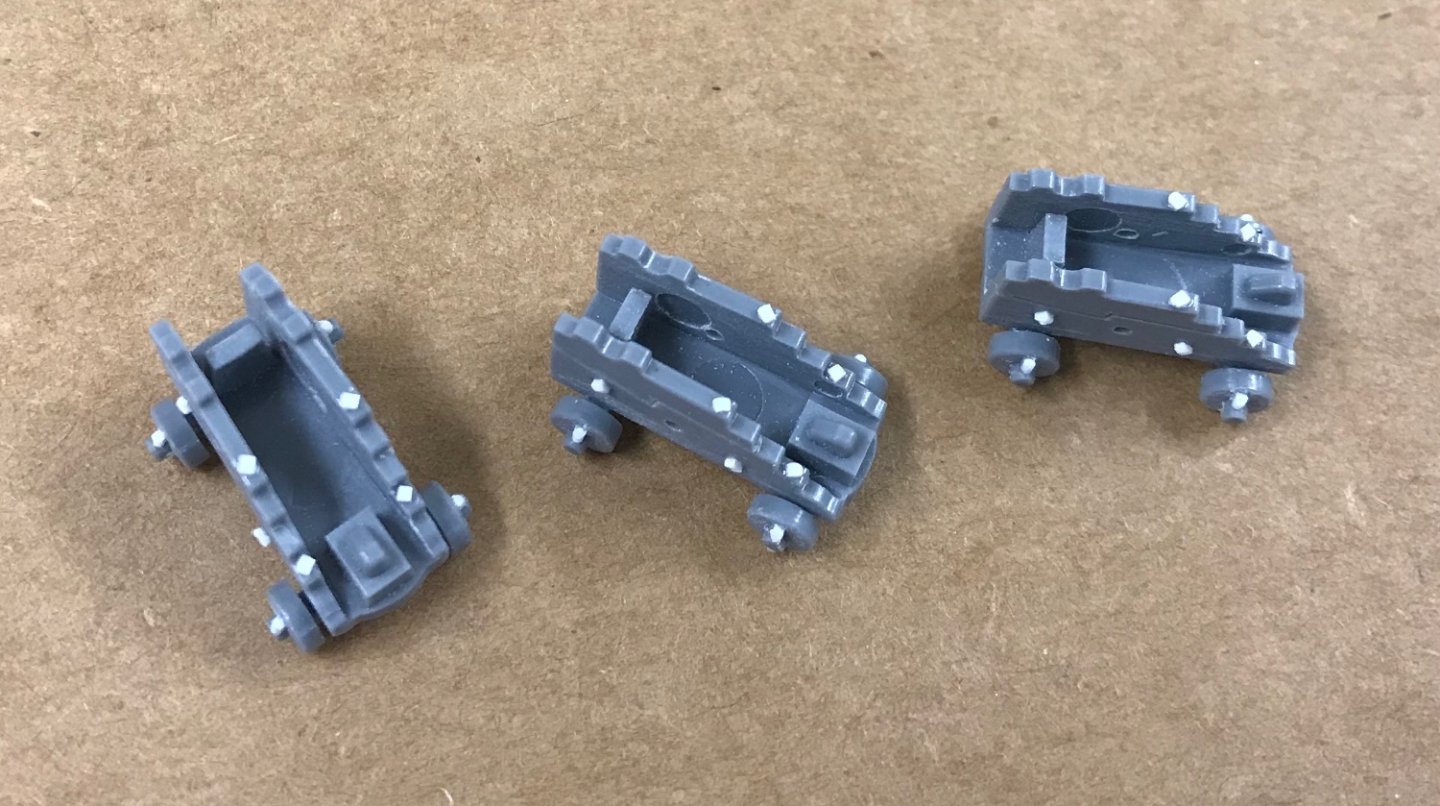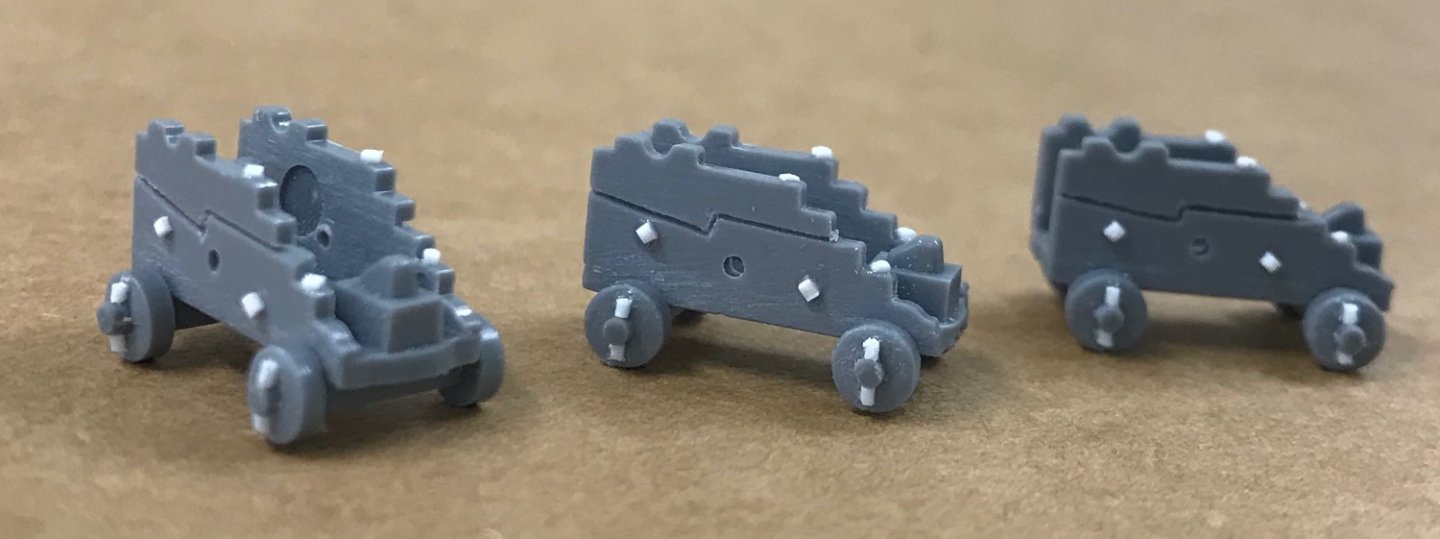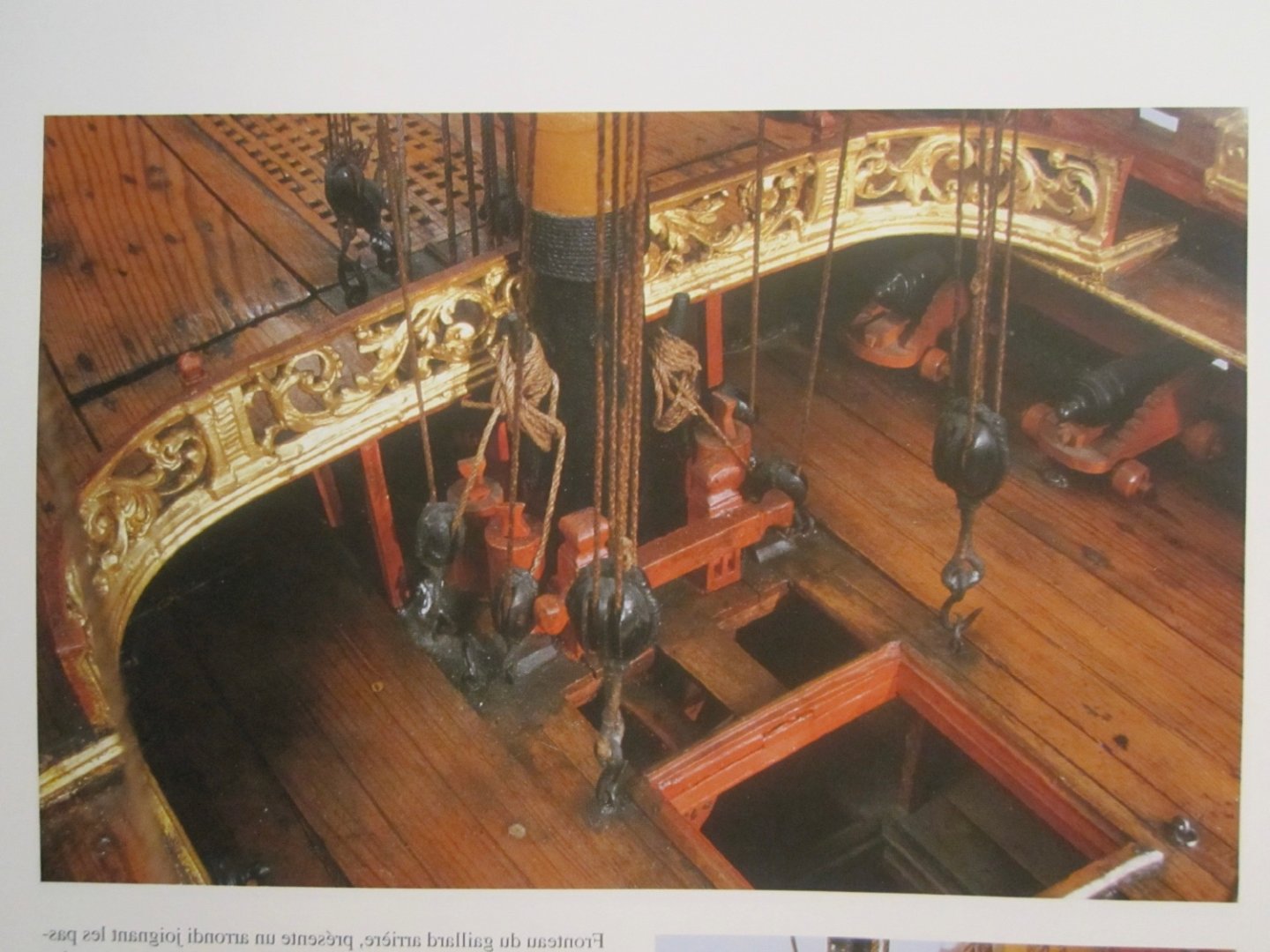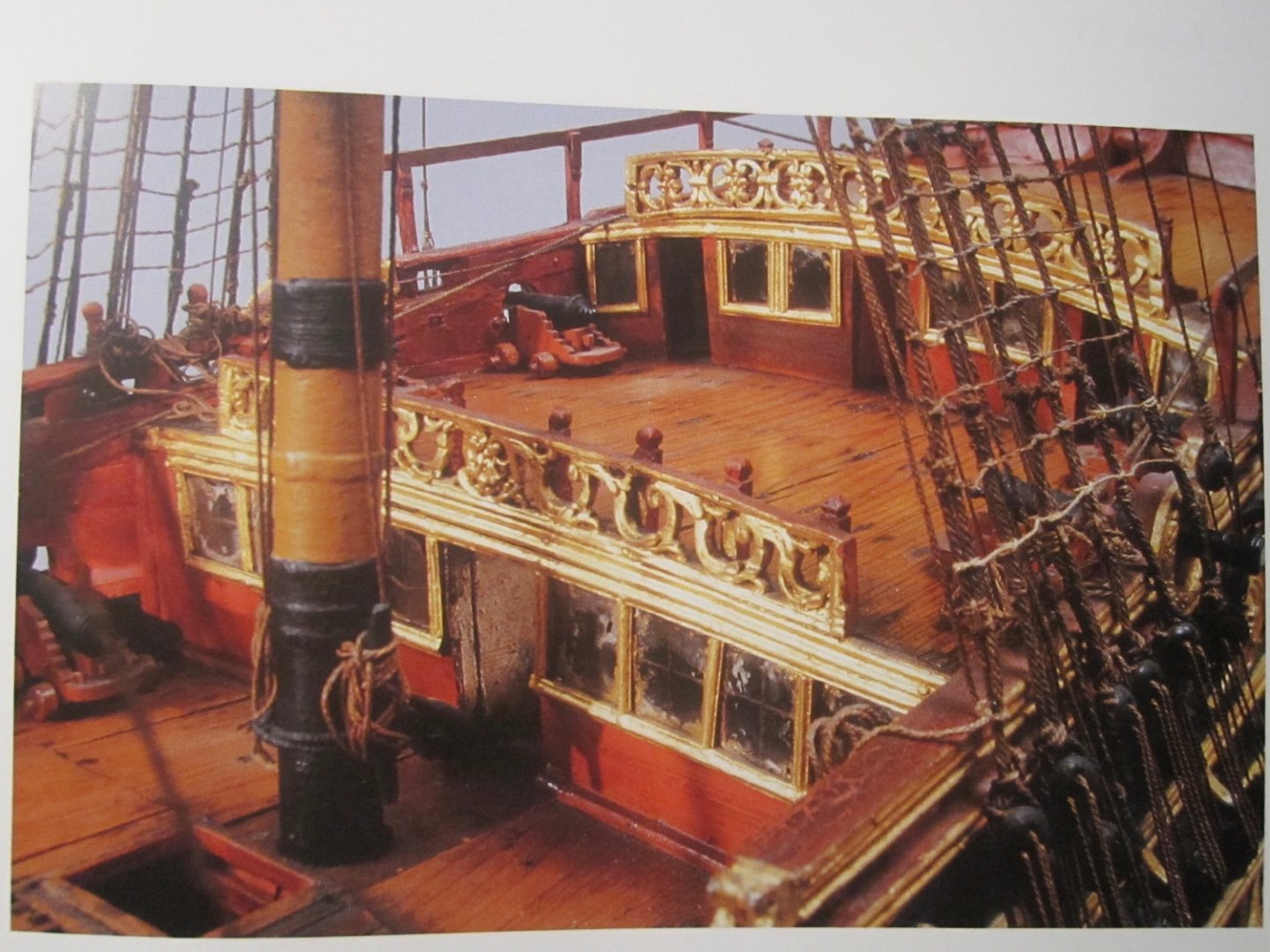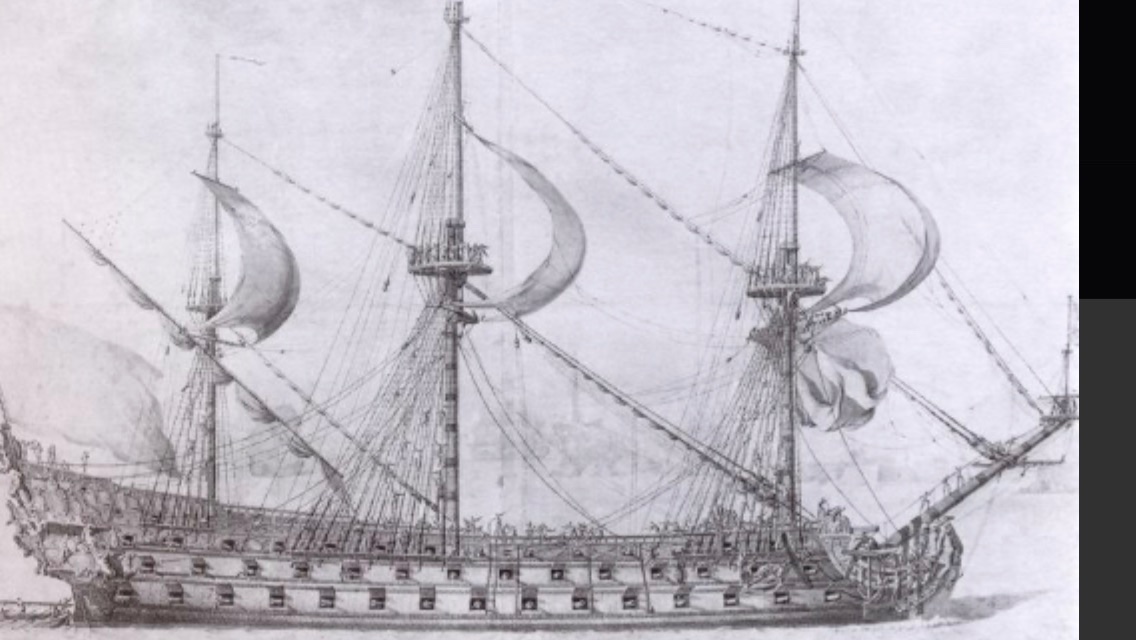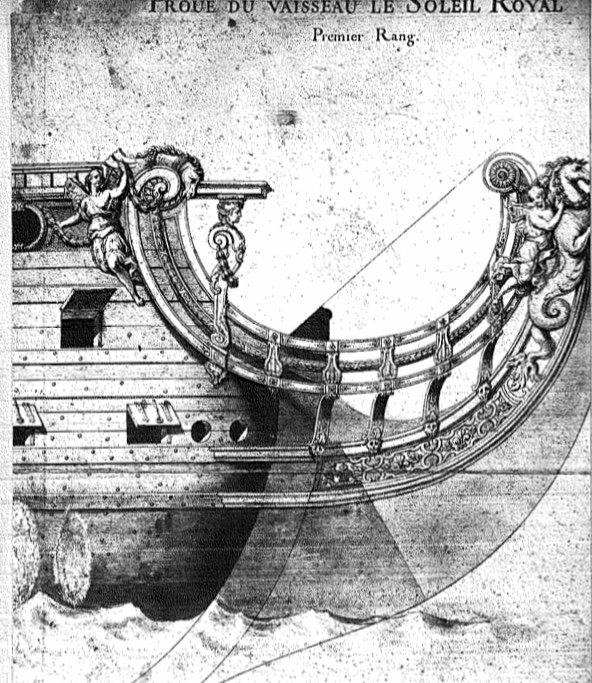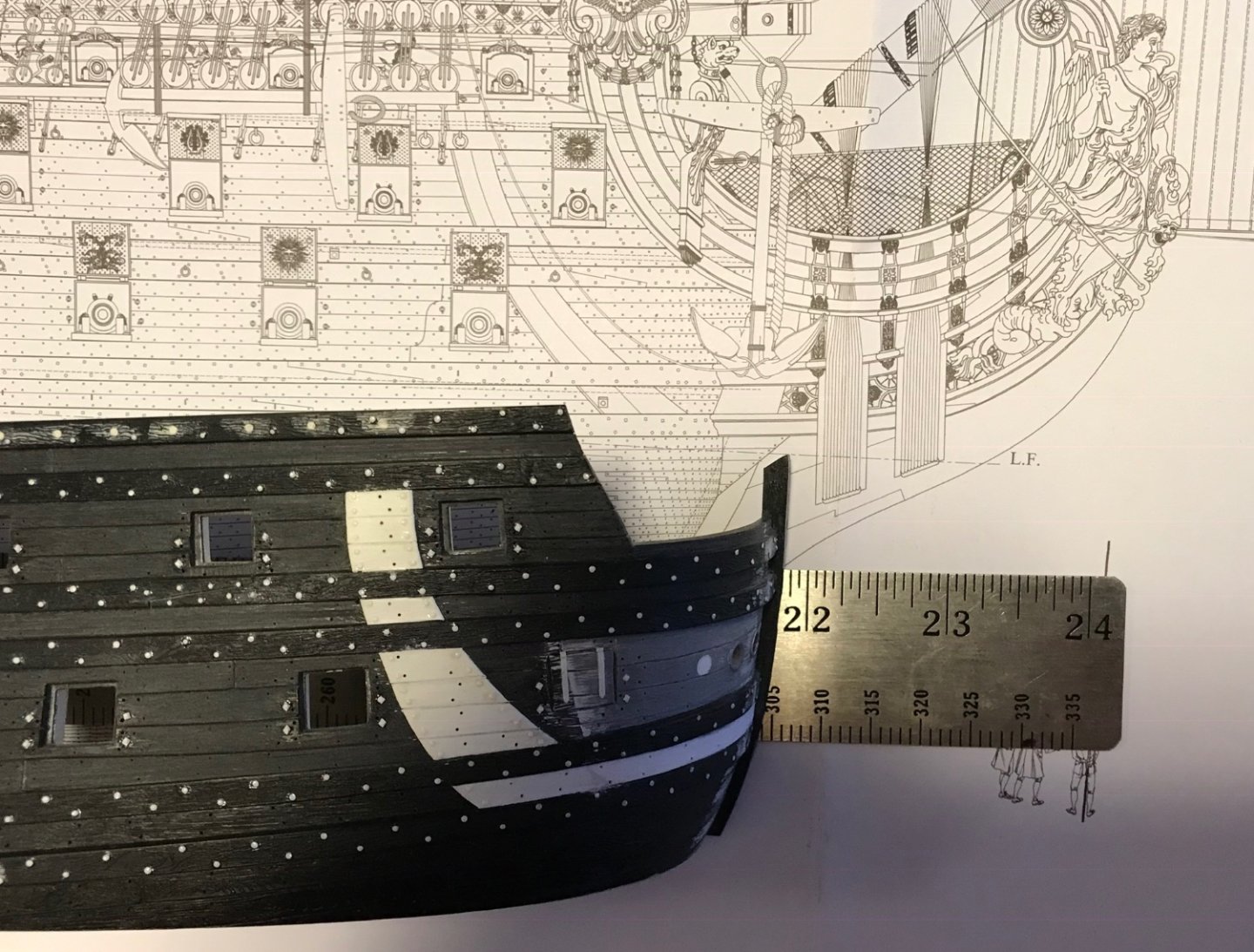-
Posts
2,950 -
Joined
-
Last visited
Content Type
Profiles
Forums
Gallery
Events
Everything posted by Hubac's Historian
-
Great solutions to vexing problems. I really like the distress wash you applied to the veneer deck. I was wondering how you would approach that. Regarding the beakhead doors, my main thought is that these doors existed to resist the punching seaways.
-
I am not making any claims, Friend. I am postulating a guess. That is all. I’m not sure that the answer you are seeking is out there in the recorded cannon. I personally couldn’t tell you, though, because I have not invested any time or energy into researching that problem. You seem to have quite a problem with Ab Hoving. I will tell you that I certainly know who he is. He has done far more than most to bring light and understanding to this time period where knowledge was spoken from one generation to the next, and perfected through the doing of the thing. I don’t know who you are, though. You seem to be searching for absolutes in a time that was more art than science.
-
The “cascabel” to set on the “quoin.” The incorrect trunnion location is not something I have considered. Fortunately, I have not painted my visible deck guns, yet, so I can move these. Doing so is a tremendous improvement. One other fiction that was pointed out to me is where the trunnions rest on the carriages. Heller represents a short raised block, onto which the trunnions rest, and over which there would be cap squares. In reality, such a small block of wood would never resist the tremendous recoil forces of firing a gun. Instead, the trunnions should be set into a continuous top edge of each cheek, that is only stepped on its aft edge. I have not decided what, if anything, I plan to do about this, as I have already painted my carriages. I could fill-in a little bit before and after the short blocks and that would be an improvement that doesn’t alter the height of the gun above deck. At some point, in the future, I will decide whether that extra effort is worth it to me.
- 1,503 replies
-
- Le Soleil Royal
- Heller
-
(and 1 more)
Tagged with:
-
As far as I know, that is correct for French ships of the period: The Louis Quinze mode of circa 1710.
- 1,503 replies
-
- Le Soleil Royal
- Heller
-
(and 1 more)
Tagged with:
-
🐎🐎🐎 and 🥃🥃 Two things any self-respecting Kentuckian can not do without 😉
- 1,503 replies
-
- Le Soleil Royal
- Heller
-
(and 1 more)
Tagged with:
-
Laphroaig is one that I could never adapt my palate to. The peat-i-ness of the Islays is a little much for me.
- 1,503 replies
-
- Le Soleil Royal
- Heller
-
(and 1 more)
Tagged with:
-
My favorite from that distillery is the Glenmorangie Sherry Cask 🥃
- 1,503 replies
-
- Le Soleil Royal
- Heller
-
(and 1 more)
Tagged with:
-
I’m enjoying a little blended scotch, myself - CHEERS!🥃
- 1,503 replies
-
- Le Soleil Royal
- Heller
-
(and 1 more)
Tagged with:
-
Marsalv, did you solder your chain segments? If so, how do you manage to keep the soldered connection so minimal and low-profile?
- 589 replies
-
- le gros ventre
- cargo
-
(and 1 more)
Tagged with:
-
What the builder above did is a little bit better, in terms of pattern, but it is still out of scale. As to whether it is worth the effort to go much smaller and represent many more bolt heads - I think that is a very individual choice; for me, adding these small custom modifications is what makes the hobby fun and interesting. I will easily spend absurd amounts of time on the smallest things. I can’t even tell you how many hours I’ve put into making my headrails and headrail support structure. For me, the rewards are in figuring out how to go about making something, and then enjoying the finished result. The time spent is almost irrelevant. To other builders, though, it just feels like tedium. That choice is entirely up to you.
- 1,503 replies
-
- Le Soleil Royal
- Heller
-
(and 1 more)
Tagged with:
-
Hi Bill, Your paint looks really great! The wale bolting, on the other hand, does not look so good. Generally, I don’t like to levy harsh critiques, but I feel compelled to speak up, here. The primary issue, here, is that the scale is much too large; at that scale, it would be better to not do the bolting at all. When I did this, I used very fine styrene rod (.020): https://evergreenscalemodels.com/products/218-020-5mm-od-rod Also, the layout matters. Although it is not critically important to change it, Heller represents butt joints on the wales, which is a complete fiction. These large structural timbers would have been scarfed together with, approximately 4’ long scarf joints. The bolting pattern, though, should be alternating top and bottom (zigzag), and closely spaced. If you zoom-in on this Puget drawing of the Royal Louis, you can even see this: Or, perhaps better seen on the Berain drawing of the SR: I don’t mean to be a rivet-counter, Bill, but scale does matter, here.
- 1,503 replies
-
- Le Soleil Royal
- Heller
-
(and 1 more)
Tagged with:
-
The anchor lining stands proud of the hull planking, but is flush with the wales, wherever it crosses a wale. It is only on the lower main wale that the lining extends forward to the stem.
- 1,503 replies
-
- Le Soleil Royal
- Heller
-
(and 1 more)
Tagged with:
-
Yes, precisely. That photo was from pretty early in the build. One of the nice things, before I painted the model, was to see all of the modifications as they were mostly made from white styrene. Part of me wishes I could see the current status of the model without any paint whatsoever.
- 1,503 replies
-
- Le Soleil Royal
- Heller
-
(and 1 more)
Tagged with:
-
I think Henry is right, that this line represents the anchor lining. However, it doesn’t really follow the path or sweep of the anchor flukes during the catting process. I added an anchor lining because it was a relatively easy modification. As was pointed out to me, back then, the space between the lower main wales, from the aft edge of the anchor lining to the stem, should also be filled flush. This is a particularity of French design.
- 1,503 replies
-
- Le Soleil Royal
- Heller
-
(and 1 more)
Tagged with:
-
This is a fascinating project, Ian. I will enjoy watching your design evolution. All the best, Marc
- 502 replies
-
- Quadrireme
- radio
-
(and 1 more)
Tagged with:
-
What you have done is above and beyond what most do. At this early stage of paint, it is not too late to use a little putty to fill the last traces of that joint. All you have to do, after leveling the filler, is re-scribe the plank seams, and spray a little touch-up paint. That’s totally above and beyond, but if you are planning to use distress washes - they will show up in that shadow of a crack. While you are it it - just as you scraped away the moulded waterline, you may choose to scrape away the vertical raised line that runs upward from the aft corner of the hawser piece. I suppose it is intended as a marker for where the headrails line up, but it doesn’t really need to be there.
- 1,503 replies
-
- Le Soleil Royal
- Heller
-
(and 1 more)
Tagged with:
-
Nice work with the file, Bill - a great result!
- 1,503 replies
-
- Le Soleil Royal
- Heller
-
(and 1 more)
Tagged with:
About us
Modelshipworld - Advancing Ship Modeling through Research
SSL Secured
Your security is important for us so this Website is SSL-Secured
NRG Mailing Address
Nautical Research Guild
237 South Lincoln Street
Westmont IL, 60559-1917
Model Ship World ® and the MSW logo are Registered Trademarks, and belong to the Nautical Research Guild (United States Patent and Trademark Office: No. 6,929,264 & No. 6,929,274, registered Dec. 20, 2022)
Helpful Links
About the NRG
If you enjoy building ship models that are historically accurate as well as beautiful, then The Nautical Research Guild (NRG) is just right for you.
The Guild is a non-profit educational organization whose mission is to “Advance Ship Modeling Through Research”. We provide support to our members in their efforts to raise the quality of their model ships.
The Nautical Research Guild has published our world-renowned quarterly magazine, The Nautical Research Journal, since 1955. The pages of the Journal are full of articles by accomplished ship modelers who show you how they create those exquisite details on their models, and by maritime historians who show you the correct details to build. The Journal is available in both print and digital editions. Go to the NRG web site (www.thenrg.org) to download a complimentary digital copy of the Journal. The NRG also publishes plan sets, books and compilations of back issues of the Journal and the former Ships in Scale and Model Ship Builder magazines.




